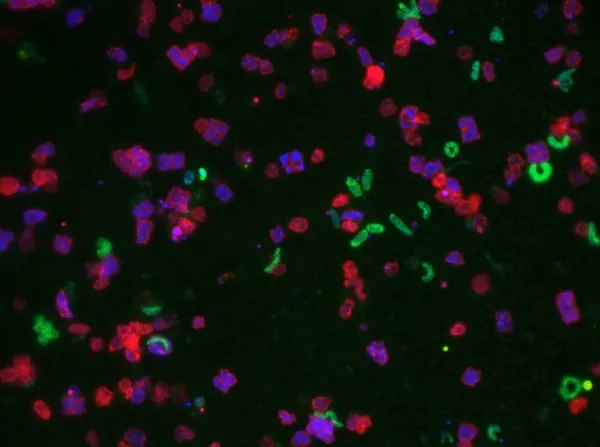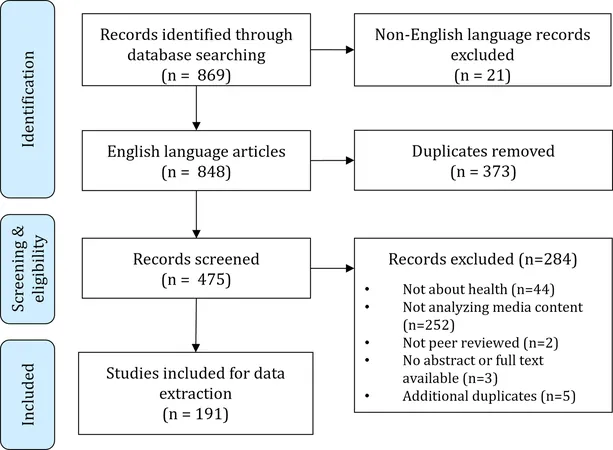
Shocking Discovery: Bacteria Have 'Sex Lives' Too! New Research Reveals How Microbes Form and Maintain Species
2025-01-23
Author: Nur
Introduction
In a groundbreaking revelation that could change our understanding of microbial life, a team of researchers led by Kostas Konstantinidis from Georgia Tech has demonstrated that bacteria, much like plants and animals, are organized into distinct species. This discovery flips the traditional view that bacteria cannot form separate species due to their unconventional genetic exchange methods and enormous global populations.
Research Findings
The research suggests that not only do bacteria form species, but they actually maintain their cohesiveness through mechanisms that resemble a form of sexual reproduction. “The next question for us was how individual microbes in the same species maintain their cohesiveness. In other words, how do bacteria stay similar?” Konstantinidis stated, emphasizing the need to understand the intricacies of microbial relationships.
Traditionally, it was believed that bacteria evolved through a process called binary fission—essentially, asexual reproduction—combined with rare genetic exchanges. However, employing an innovative bioinformatics approach and leveraging extensive genome data, Konstantinidis and his team revealed a much more complex picture of microbial evolution that hints at more frequent and structured gene transfer.
Their findings have been published in the prestigious journal *Nature Communications*—a platform that further solidifies the impact of their work on the scientific community.
Methodology
To investigate the identity preservation within microbial species, the researchers meticulously analyzed full genomes from two natural populations. They collected and sequenced over 100 strains of *Salinibacter ruber*, known as a salt-loving bacterium from solar salterns in Spain, and scrutinized previously published *Escherichia coli* genomes sourced from livestock farms in the UK. Their comparisons unveiled intriguing patterns of gene exchange among closely related microbes.
Homologous Recombination and Genetic Exchange
A significant revelation from this study is the role of homologous recombination—a process where microbes swap DNA and incorporate the new genetic material into their own genomes by replacing similar DNA sequences. This process was observed to occur frequently and across entire genomes, not confined to a select few areas, which contrasts sharply with how genetic exchanges happen in other organisms during meiosis.
“This constant exchange of genetic material acts as a cohesive force, keeping members of the same species similar,” Konstantinidis explained, drawing connections between microbial and non-microbial species cohesion.
Implications for Science and Health
Moreover, the research found that bacteria are more likely to exchange DNA with members of their own species than with those of different species, reinforcing the boundaries that define various bacterial species.
The implications of this study stretch far beyond microbiology; they touch on critical aspects of environmental science, evolutionary biology, and healthcare. Understanding how microbial species form and maintain their unique identities could lead to advances in how we identify, model, and regulate organisms with significant clinical or environmental importance.
Additionally, the methodologies developed provide a new molecular toolkit for future studies on epidemiology and microbial diversity, paving the way for enhanced insights into the microscopic world.
Conclusion
As this research unfolds, it could open new avenues in fields ranging from medicine to public health, revolutionizing the way we perceive bacteria and their critical roles within ecosystems.
In a world where understanding life at its most fundamental level is crucial for addressing global challenges, this study promises to shed light on the deeply interconnected 'sex lives' of bacteria—an area that has been shrouded in mystery for far too long.
Stay tuned for more updates on this fascinating research!





 Brasil (PT)
Brasil (PT)
 Canada (EN)
Canada (EN)
 Chile (ES)
Chile (ES)
 Česko (CS)
Česko (CS)
 대한민국 (KO)
대한민국 (KO)
 España (ES)
España (ES)
 France (FR)
France (FR)
 Hong Kong (EN)
Hong Kong (EN)
 Italia (IT)
Italia (IT)
 日本 (JA)
日本 (JA)
 Magyarország (HU)
Magyarország (HU)
 Norge (NO)
Norge (NO)
 Polska (PL)
Polska (PL)
 Schweiz (DE)
Schweiz (DE)
 Singapore (EN)
Singapore (EN)
 Sverige (SV)
Sverige (SV)
 Suomi (FI)
Suomi (FI)
 Türkiye (TR)
Türkiye (TR)
 الإمارات العربية المتحدة (AR)
الإمارات العربية المتحدة (AR)